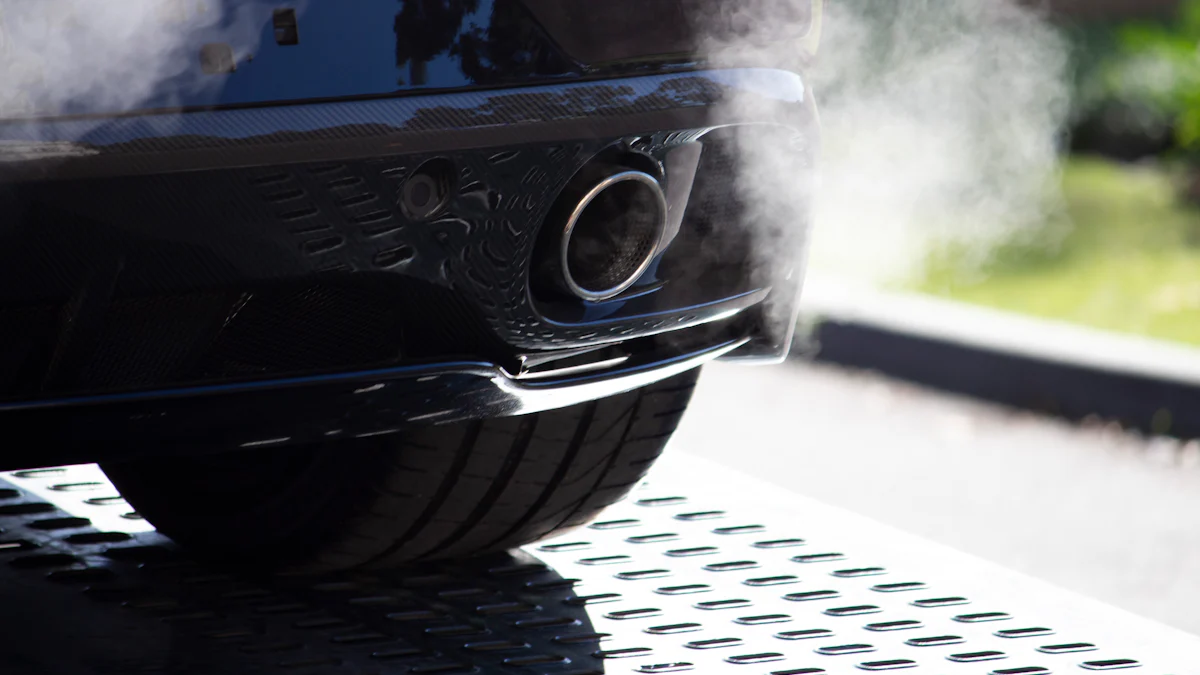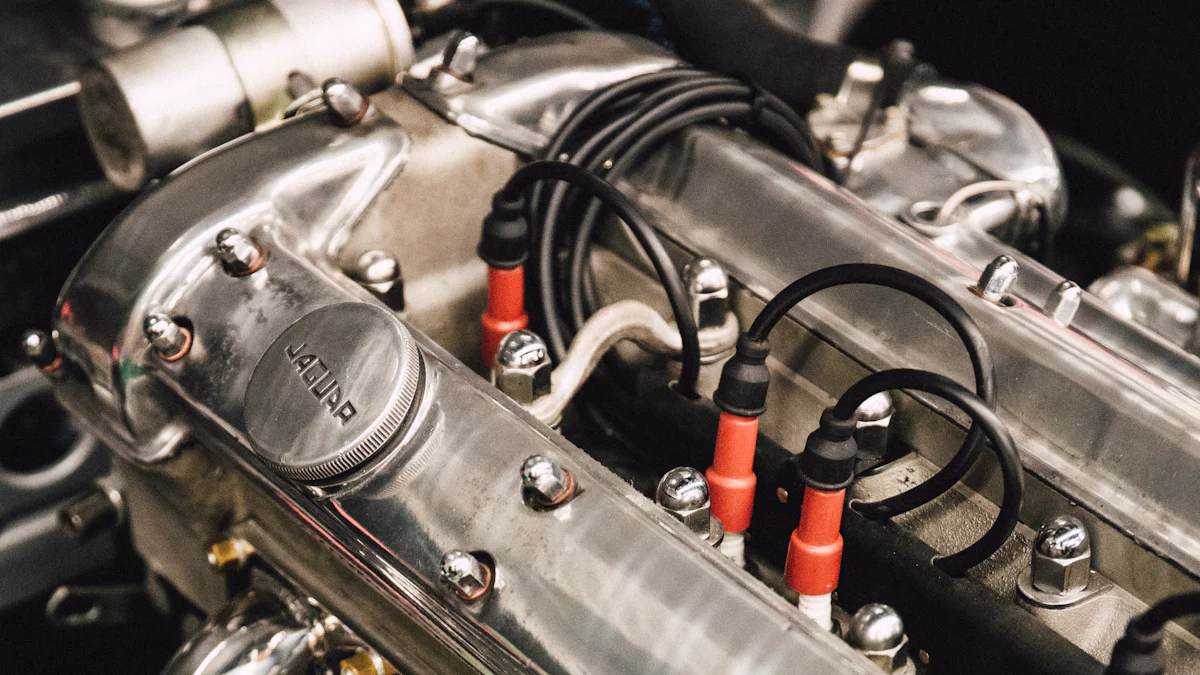
The 2004 Nissan Titan engine exhaust manifold is a vital component of the vehicle’s engine system. It plays a crucial role in ensuring optimal performance and efficiency. Understanding the significance of the engine exhaust manifold is key to maintaining your Nissan Titan in top condition. By recognizing potential issues early on, you can address them promptly and keep your vehicle running smoothly. Stay informed about the key aspects of this essential part to make informed decisions for your car’s maintenance.
Function of Exhaust Manifold
Role in Engine Performance
The engine exhaust manifold of the 2004 Nissan Titan significantly impacts the overall performance of the vehicle. By efficiently guiding the exhaust gases away from the engine cylinders, it ensures that the engine operates smoothly and maintains optimal power output. This crucial component plays a vital role in enhancing the engine’s efficiency and performance.
Exhaust Flow
One key aspect of the 2004 Nissan Titan exhaust manifold is its role in managing exhaust flow. The manifold collects exhaust gases from multiple cylinders and channels them into a single pipe, allowing for efficient expulsion from the engine. This streamlined flow helps reduce back pressure, enhancing engine performance and fuel efficiency.
Emission Control
Another essential function of the engine exhaust manifold is its contribution to emission control. By directing exhaust gases towards the catalytic converter, it facilitates the conversion of harmful pollutants into less harmful emissions before they are released into the environment. This process helps ensure that your Nissan Titan complies with emission regulations while minimizing its environmental impact.
Common Issues
Despite its critical role, the 2004 Nissan Titan exhaust manifold is susceptible to certain common issues that can affect engine performance if left unaddressed.
Cracks and Leaks
One prevalent issue with exhaust manifolds is the development of cracks or leaks over time. These defects can lead to noisy operation, reduced engine efficiency, and even potential safety hazards due to escaping hot gases. Regular inspection and timely repairs are essential to prevent these issues from escalating.
Restricted Flow
Another common problem associated with exhaust manifolds is restricted flow. Build-up of carbon deposits or debris within the manifold can impede proper airflow, leading to decreased engine performance and fuel economy. Periodic maintenance, including cleaning or replacement when necessary, can help prevent this issue.
Types of Exhaust Manifolds

OEM vs Aftermarket
When considering OEM versus Aftermarket Exhaust Manifolds for your 2004 Nissan Titan, it’s essential to understand the key differences between these options.
OEM Exhaust Manifolds
OEM parts are recommended by manufacturers to ensure engine longevity and optimal performance. These exhaust manifolds are specifically designed to meet the standards set by Nissan for your Titan. By choosing OEM exhaust manifolds, you can be confident in the quality and compatibility with your vehicle.
Aftermarket Exhaust Manifolds
On the other hand, Aftermarket Exhaust Manifolds may vary in quality and reliability compared to OEM parts. While aftermarket options offer a wider range of choices and sometimes cost less, they might not always meet the same standards as OEM parts. It’s crucial to research and select reputable aftermarket brands known for their quality products.
Material Differences
Another important consideration when selecting an exhaust manifold is the material used in its construction.
Cast Iron
Cast iron exhaust manifolds are known for their durability and heat resistance. They can withstand high temperatures without warping or cracking, making them a reliable choice for long-term use. The robust nature of cast iron ensures that the manifold can endure harsh conditions without compromising performance.
Stainless Steel
In contrast, stainless steel exhaust manifolds offer advantages such as corrosion resistance and a sleek appearance. Stainless steel is less prone to rust or degradation over time, ensuring that your exhaust system maintains its integrity for years to come. Additionally, stainless steel manifolds can contribute to improved engine efficiency due to their smooth internal surface.
By understanding the differences between OEM and aftermarket exhaust manifolds, as well as the unique properties of cast iron and stainless steel materials, you can make an informed decision when upgrading or replacing the exhaust manifold on your 2004 Nissan Titan.
Benefits of Aftermarket Exhaust Manifolds
Improved Performance
When considering aftermarket exhaust manifolds for the 2004 Nissan Titan, drivers can expect enhanced horsepower and better fuel efficiency. Upgrading to an aftermarket exhaust manifold can unleash the full potential of the engine, resulting in a noticeable increase in power output. By optimizing the flow of exhaust gases, the new manifold allows for more efficient combustion, translating into improved performance on the road.
Sound and Aesthetics
One of the appealing aspects of aftermarket exhaust manifolds is the opportunity to enhance both sound and visual appeal. The distinctive growl produced by an upgraded exhaust system adds a touch of aggression to the vehicle’s overall character. Moreover, the sleek design and polished finish of aftermarket manifolds contribute to a more attractive appearance, elevating the aesthetics of the Nissan Titan.
Installation Guide

Tools and Preparation
Required Tools
To begin the installation process of the 2004 Nissan Titan exhaust manifold, gather the necessary tools for a smooth workflow. Ensure you have a socket wrench, torque wrench, gloves, safety goggles, and penetrating oil. These tools will aid in efficiently removing the old manifold and installing the new one without any complications.
Safety Measures
Prioritize safety during the installation to prevent any accidents or injuries. Wear protective gear such as gloves and safety goggles to shield yourself from potential hazards. Additionally, make sure the vehicle is parked on a flat surface with the engine turned off before starting the installation process.
Step-by-Step Installation
Removing the Old Manifold
- Locate the exhaust manifold under the hood of your 2004 Nissan Titan.
- Disconnect the negative terminal of the battery to ensure safety during removal.
- Spray penetrating oil on the bolts connecting the manifold to facilitate easy loosening.
- Use a socket wrench to carefully remove each bolt securing the old manifold.
- Gently detach the old exhaust manifold from the engine block, ensuring no damage occurs.
Installing the New Manifold
- Clean the mounting surface on the engine block to prepare for installation.
- Place a new gasket on top of the cleaned surface for a proper seal.
- Position the new exhaust manifold in place, aligning it with the mounting holes.
- Hand-tighten each bolt initially to secure the manifold in position.
- Gradually torque down each bolt in a criss-cross pattern to ensure even pressure distribution.
By following these step-by-step instructions, you can successfully replace your 2004 Nissan Titan’s exhaust manifold with precision and care.
Maintenance Tips
Regular Inspections
When checking for cracks in the 2004 Nissan Titan exhaust manifold, it is crucial to conduct thorough visual inspections. Start by examining the surface of the manifold for any visible signs of damage, such as fissures or fractures. These cracks can develop over time due to heat exposure and stress, potentially leading to leaks and decreased performance. By regularly inspecting the exhaust manifold, drivers can identify issues early on and prevent further damage to the engine system.
To ensure the proper fit of the exhaust manifold, it is essential to verify that all connections are secure and aligned correctly. Check that the manifold sits flush against the engine block without any gaps or misalignments. Any discrepancies in fitment can result in exhaust leaks, affecting engine efficiency and overall performance. By confirming the proper installation of the manifold, drivers can maintain optimal functionality and prevent potential issues down the road.
Cleaning and Upkeep
To remove carbon build-up from the exhaust manifold, drivers can utilize specialized cleaning products designed for this purpose. Carbon deposits can accumulate inside the manifold over time, hindering exhaust flow and reducing engine efficiency. By applying a suitable cleaner and following manufacturer instructions, motorists can effectively dissolve and eliminate carbon build-up, restoring proper airflow within the system.
Protecting against rust is essential for maintaining the longevity of the exhaust manifold. Since rust can compromise the structural integrity of metal components, it is crucial to take preventive measures to inhibit its formation. Drivers can apply rust inhibitors or coatings specifically formulated for automotive use to shield the manifold from corrosion. Regularly inspecting for signs of rust and addressing them promptly can help prolong the lifespan of the exhaust system.
In conclusion, the 2004 Nissan Titan exhaust manifold is a critical component that significantly impacts the vehicle’s performance. Upgrading to aftermarket options can unleash enhanced horsepower and fuel efficiency, improving overall driving experience. For 2004 Nissan Titan owners, considering aftermarket exhaust manifolds like those offered by Werkwell can provide both functional benefits and aesthetic appeal. By prioritizing regular maintenance and inspections, drivers can ensure the longevity and optimal function of their engine exhaust manifold.
Post time: Jun-14-2024



